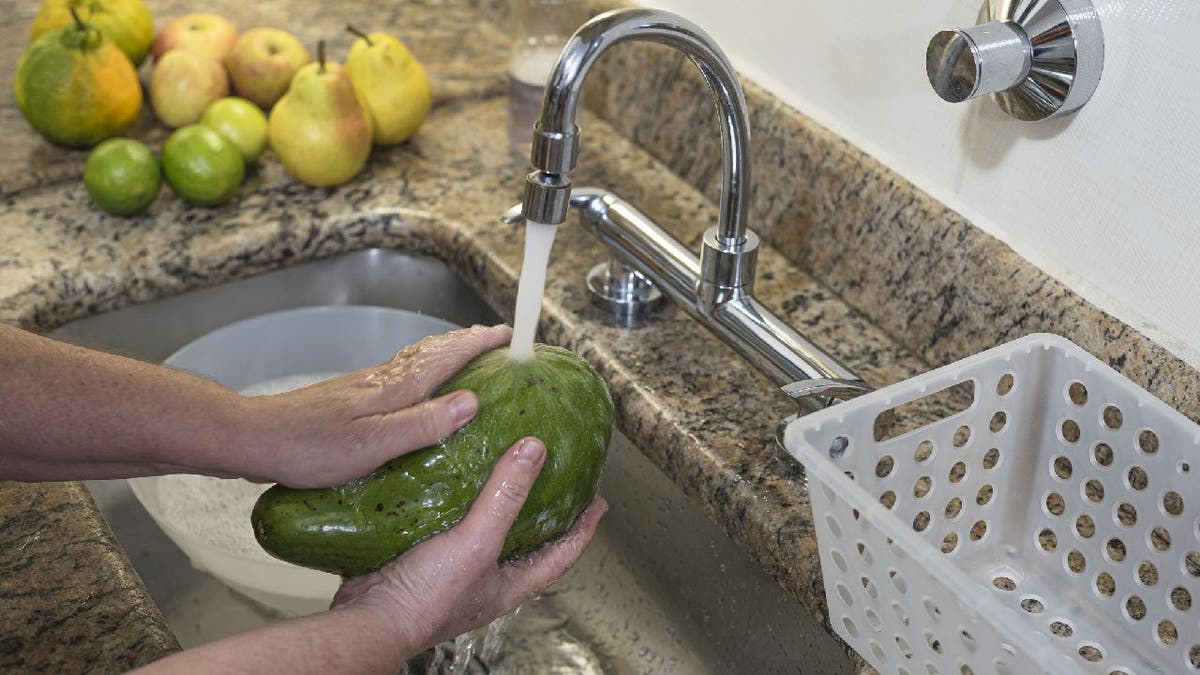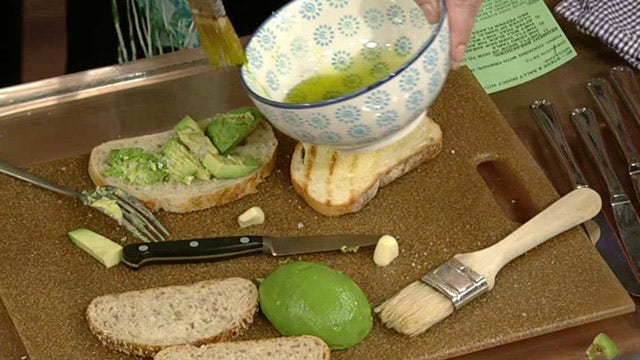Cooking with 'Friends': Doocy Avocado Toast
Bon Appetit magazine's Adam Rapoport created Doocy Family tradition
A popular kitchen hack that people have been using to keep avocados ripe and fresh in jars of water is being discouraged by the U.S. Food and Drug Administration.
The method has been widely shared online and has gone viral on social media platforms like Facebook and TikTok, where people have reviewed the storage method positively.
Some have tested out the hack with before and after videos that show avocados maintain their internal green-yellow appearance after the fruit has been submerged for days or weeks at a time.
Food experts at the FDA have been working to set the record straight after many of these quick-hit lifestyle videos have garnered millions of views.
HASH BROWN AVOCADO TOAST RECIPE FROM TIKTOK UPGRADES A BREAKFAST FAVORITE
"The FDA does not recommend this practice," a spokesperson for the FDA told Fox News Digital. "The main concern is with the possibility that any residual human pathogens – for example, Listeria monocytogenes, Salmonella spp., etc. – that may be residing on the avocado surface, may potentially multiply during the storage when submerged in water."

Avocados are a large berry that grows on trees. It's a part of the flowering plant family Lauraceae and is native to the highland regions of South-Central Mexico and Guatemala. There are various subspecies. (iStock)
Citing a 2016 to 2016 study the FDA re-published in February 2022 titled Microbiological Surveillance Sampling for Whole Fresh Avocados, the health agency found that dangerous bacteria can build up on avocado skin and can easily cause cross-contamination.
"Research performed by FDA scientists has shown that Listeria monocytogenes has the potential to infiltrate and internalize into the pulp of avocados when submerged in refrigerated dump tanks within 15 days during refrigerated storage," the FDA told Fox News Digital. "In this case, even surface disinfecting the avocado skin prior to slicing would not be able to remove the contamination."
USDA URGES SUMMER FOOD SAFETY PRECAUTIONS FOR OUTDOOR COOKING
In the U.S., listeria and salmonella are two bacteria that cause some of the most common foodborne illnesses (such as food poisoning), hospitalizations and deaths, according to foodsafety.gov – which is managed by the U.S. Department of Health & Human Services.

Avocados should be left in a pantry until ripe. It can be sliced when the fruit feels tender. (iStock)
Symptoms of listeria or salmonella infection include fever, headaches, muscle aches, nausea, vomiting and diarrhea.
Instead of submerging avocados in water for extended periods, the FDA recommends storing avocados in a dry environment.
EVERYTHING YOU NEED TO KNOW ABOUT AVOCADOS
Like all other produce, the FDA says the green fruit should be washed thoroughly under running water without soap before eating. Avocados can be washed with a clean produce brush since it’s a firm fruit.
The FDA reiterates that washing produce is a must, even if you’re not planning to eat a fruit or vegetable’s skin, so dirt and lesser bacteria can be removed and minimize cross-contamination.

Fruits and vegetables should be thoroughly rinsed before eating, accord to the FDA. (iStock)
Avocados should be dried after washing. Bruised and damaged parts can be cut off, but if there’s visible rotting, the avocado should be thrown away, according to the FDA.
CLICK HERE TO GET THE FOX NEWS APP
If you absolutely need to store an avocado, the USDA’s FoodKeeper App says avocados can be left in a pantry until it ripens while already ripe avocados can be left in a fridge for three to four days. Freezing avocados is not recommended.

